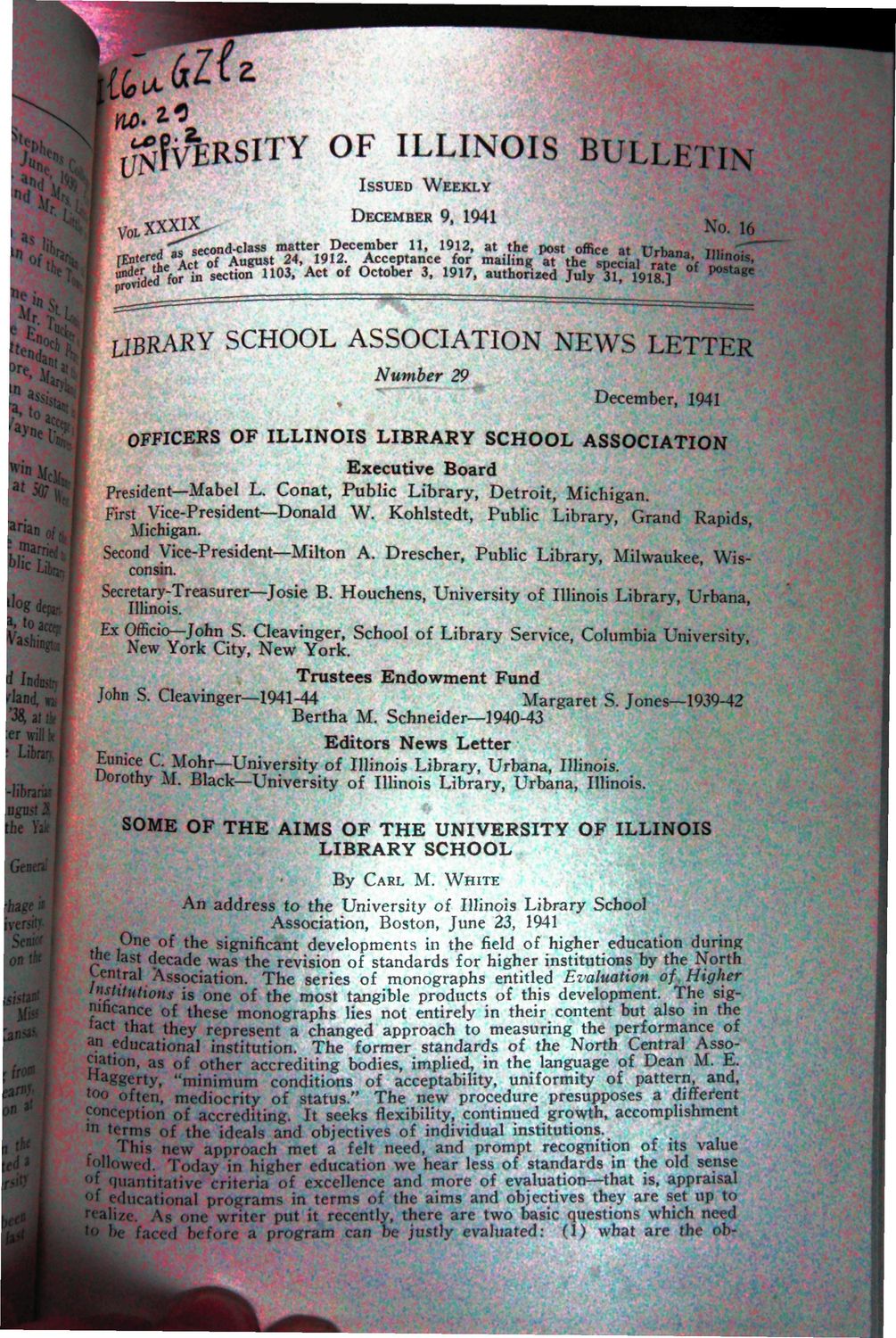| |
| |
Caption: UI Library School Alumni Newsletter - 29
This is a reduced-resolution page image for fast online browsing.

EXTRACTED TEXT FROM PAGE:
rj^fvTttSITY OF ILLINOIS BULLETIN ISSUED WEEKLY in* lib **e i s XXXIX VOL iccond ^ DECEMBER No. 16 Illinois, authorized ] • LIBRARY SCHOOL ASSOCIATION NEWS LETTER Number 29 December, 1941 ^ er 3 OFFICERS OF I L L I N O I S L I B R A R Y S C H O O L ASSOCIATION Executive Board President—Mabel L. Conat, Public Library, Detroit, Michigan. First Vice-President—Donald W. Kohlstedt, Public Library, Grand Rapids Michigan. ' Second Vice-President—Milton A. Drescher, Public Library, Milwaukee, Wisconsin. Secretary-Treasurer—Josie B. Houchens, University of Illinois Library, Urbana, Illinois. Officio—John S. Cleavinger, New York City, New York. Endowment Fund John S. Cleavinger—1941-44 Margaret S. Jones—1939-42 Bertha M. Schneider—1940-43 E d i t o r s News Letter Eunice C Mohr—University of Illinois Library, Urbana, Illinois. Dorothy M. Black—University of Illinois Library, Urbana, Illinois. — — SOME O F T H E A I M S O F T H E U N I V E R S I T Y O F I L L I N O I S L I B R A R Y SCHOOL Genen By CARL M. WHITE •hagt 5ciu on tk | isistar on a I An address to the University of Illinois Library School Association, Boston, June 23, 1941 e *C 0 " of the significant developments in the field of higher education during *V last decade was the revision of standards for higher institutions by the North y-entral Association. The series of monographs entitled Evaluation of Higher "fstitutions is one of the most tangible products of this development. The significance of these monographs lies not entirely in their content but also in the 'act that they represent a changed approach to measuring the performance of an educational institution. The former standards of the North Central Association, as of other accrediting bodies, implied, in the language of Dean M. E. Ha ggerty, "minimum conditions of acceptability, uniformity of pattern, and, too often, mediocrity of status." The new procedure presupposes a different conception of accrediting. It seeks flexibility, continued growth, accomplishment m terms of the ideals and objectives of individual institutions. This new approach met a felt need, and prompt recognition of its value followed. Today in higher education we hear less of standards in the old sense { quantitative criteria of excellence and more of evaluation—that is, appraisal 1 educational programs in terms of the aims and objectives they are set up to ali/e. As one writer put it recently, there are two basic questions which need ' be faced before a program can be justly evaluated: (1) what are the ob-
| |